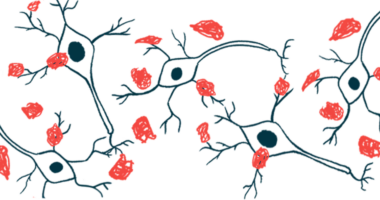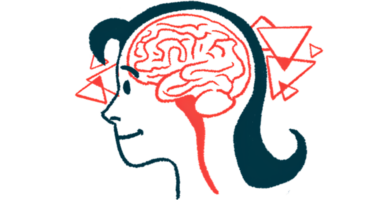Men with Parkinson’s have faster brain aging than women: Study
New AI-based data support idea that 'sex plays vital function' in disease

Men with Parkinson’s disease exhibit more signs of accelerated brain aging than do women with the neurodegenerative condition, according to a new analysis that, its researchers say, bolsters the existing idea that a person’s sex plays a key role in Parkinson’s risk and progression.
These findings were established by an AI, or artificial intelligence-supported analysis of neuroimaging data — which showed that all Parkinson’s patients exhibited faster brain aging relative to healthy people. But the study also demonstrated that, overall, women have milder symptoms of the disease than do men.
“Having ‘older’ looking brains in [men with Parkinson’s] than [women with Parkinson’s] supports the idea that sex plays a vital function in [the disease], such that the [Parkinson’s disease] mechanism may be different in males and females,” the researchers wrote.
“This study has the potential to broaden our understanding of dissimilarities in brain aging between sexes in the context of [Parkinson’s disease],” the team noted.
Their study, “Differences in brain aging between sexes in Parkinson’s disease,” was published in npj Parkinson’s disease.
Scientists use AI-based model to predict brain age in people
It is well-recognized that sex plays a significant role in the development and progression of Parkinson’s disease, with men generally found to be at a higher risk of the condition and to have a more severe prognosis than women do.
The mechanisms underlying these differences are not fully known, but sex hormones such as estrogen might play a role.
The brain naturally changes with age, with structural alterations and tissue loss, or atrophy, that contribute to cognitive declines. Studies have indicated that the normal brain aging process is exacerbated or accelerated in Parkinson’s patients, but whether this may differ by sex remains under-investigated.
Now, a team of scientists from the University of Manitoba, in Canada, aimed to explore this issue with a new AI-based analysis. The scientists used a model known as Brain-PAD — which generates a score reflective of a person’s brain-predicted age minus their actual age — to predict brain age based on MRI findings.
With Brain-PAD, a higher positive score means that a person’s brain has aged faster than expected for the individual’s actual age. A score of 5, for example, means a person’s brain was estimated to have aged five years faster than expected.
This model was applied to 373 Parkinson’s patients — comprising 244 men and 129 women — involved in the Parkinson’s Progression Markers Initiative (PPMI), a large international study of people both with and without Parkinson’s. These patients were compared with a group of 105 healthy people.
In the healthy people, the mean Brain-PAD score was about 0, reflecting a brain age that’s matched to actual age. In the Parkinson’s patients, by comparison, the scores were significantly higher, with a mean of 2.92 years.
There were no sex differences in Brain-PAD scores among healthy people, but men with Parkinson’s had a significantly higher mean Brain-PAD score than their female counterparts (3.53 versus 1.78 years).
“This result would suggest that the male sex is more influenced by disease-accelerated brain atrophy associated with aging in [Parkinson’s],” the researchers wrote.
The difference was preserved even when only including a subgroup of 129 men matched to the female group for demographic factors and Parkinson’s symptoms. These patients were called the propensity score-matched group.
Accelerated brain aging process seen in men with Parkinson’s
Further, the associations between certain Parkinson’s clinical features and Brain-PAD scores were found to be similarly influenced by sex.
Among Parkinson’s patients, greater motor symptom severity was significantly associated with higher Brain-PAD scores. This correlation persisted in male patients, but not in women or propensity-matched men.
Worse cognition was significantly associated with higher Brain-PAD scores in men in either group, but not in women. Sex differences also observed in certain other nonmotor symptoms, namely visuospatial function and REM sleep behavior disorder, in which individuals physically and vocally act out vivid, often unpleasant dreams while sleeping.
The Parkinson’s disease biomarkers alpha-synuclein and amyloid-beta were significantly linked to Brain-PAD in all Parkinson’s patients and specifically in women controls, but not in men.
By recognizing the accelerated aging-related changes in the brain structure, we can potentially discover novel therapeutic targets … to decrease the impact of [Parkinson’s disease] on brain health and its progression in this population.
Among Parkinson’s patients, changes in the brain’s gray matter — which largely contain nerve cell bodies and nerve support cells — were most strongly associated with increasing Brain-PAD scores, especially in brain regions associated with cognition. Again, these relationships were stronger in men with Parkinson’s than in women with the disease.
Gray matter changes in certain brain regions involved in memory and cognition were tied to brain aging in healthy people, but not in Parkinson’s patients, “potentially suggesting that the disease-related degeneration interfered with the normal aging-related degeneration in this … area,” the researchers wrote.
Altogether, the findings reveal “distinct patterns that suggest an accelerated aging process,” in men with Parkinson’s, the researchers wrote.
The team noted that it will be critical to understand these differences so as to develop targeted treatment approaches.
“By recognizing the accelerated aging-related changes in the brain structure, we can potentially discover novel therapeutic targets … to decrease the impact of [Parkinson’s disease] on brain health and its progression in this population,” the team concluded.








